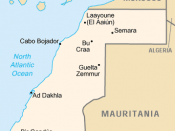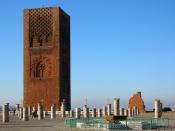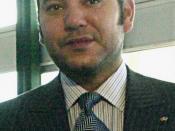Name
Professor
Course
Date
Middle Eastern Events in Historical Perspective: Arab Awakenings since 2010
Morocco is a North Africa nation with a population of over 32M and covers an area of 446,550 square kilometers (172,410 sq mi).Its political head quarters is in Rabat, main religion is Islam and official languages are Arabic and Berber. Its demographics are populated by the Arabs and the Berbers who from approximately 99.1% of the entire population (Leonard 1085). Morocco is significant in world politics because of the Western Sahara issue and considerably important in global economics due to possession of phosphate used to manufacture fertilizers across the globe.
Long considered as a stable nation Morocco was not spared of the civil unrest that was sweeping through the Arab countries that started in Tunisia. The citizens took to the streets to violently protest bad governance and poor economy that weighed heavily on the poor people.
The protestors first flooded the streets of Rabat in June 2011 but got an assurance from the Monarch: King Mohammed VI that constitutional reforms were to be undertaken with immediate effect to address their grievances (Arieff 14). However, feeling cheated and thus not satisfied, young Moroccans instigated a nationwide protest through the social media through the "Democracy and freedom Now" movement that resulted to the February 2012 appalling protests in the city of Casablanca.
The Moroccan uprisings can be traced back to the events in its history. Since achieving independence in 1956 the North African Arab state has only been ruled by two monarch leaders: Hassan II who was succeeded by his son and who serves to date: King Mohammed VI. Clearly, Moroccans have never tasted democracy in choosing their leaders. The Monarch was bestowed with much powers and which history illustrates the misuse in this power that has...


